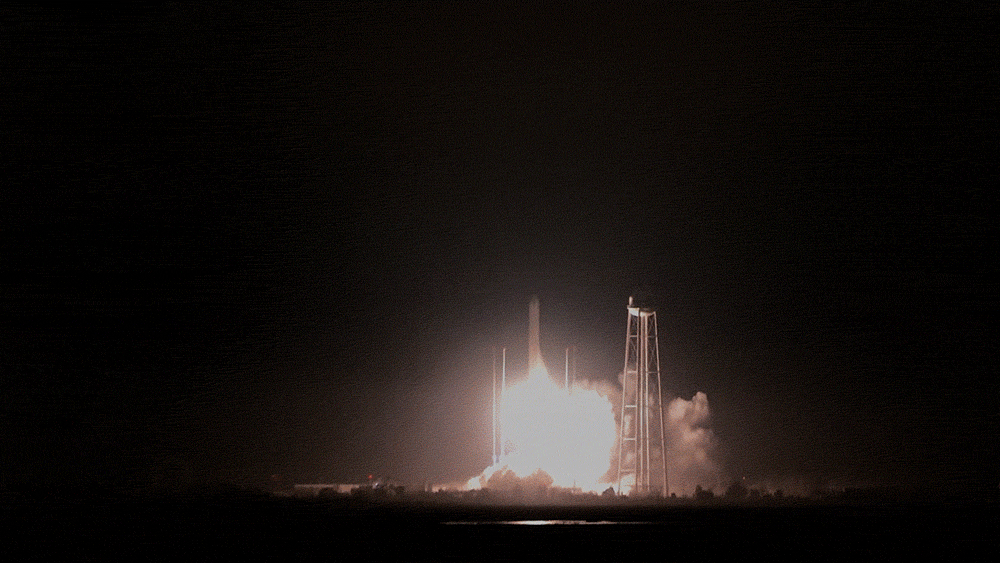
Orbital ATK’s Cygnus cargo spacecraft lifted off aboard the company’s Antares rocket at 4:44:06 a.m. EDT May 21 from Virginia Space’s Mid-Atlantic Regional Spaceport at NASA’s Wallops Flight Facility on Virginia’s Eastern Shore. The International Space Station-bound Cygnus is loaded with about 7,400 pounds of supplies and payloads, including critical materials to directly support dozens of the more than 250 science and research investigations that will occur during the space station’s Expeditions 55 and 56.

The cargo ship will rendezvous with the International Space Station on Thursday, May 24. Expedition 55 Flight Engineer Scott Tingle will grapple the spacecraft at approximately 5:20 a.m. EDT, backed by Ricky Arnold, and Drew Feustel will monitor Cygnus systems during its approach. They will use the space station’s robotic Canadarm2 to take hold of the Cygnus, dubbed the S.S. James “J.R.” Thompson. After Cygnus’ capture, ground controllers will command the robotic arm to rotate and install Cygnus onto the station’s Unity module. It is scheduled depart the space station in mid-July.
Live coverage of the rendezvous and capture will air on NASA Television and the agency’s website beginning at 3:45 a.m. Thursday, May 24. Installation coverage is set to begin at 7:30 a.m.
Science investigations aboard Cygnus on their way to the space station also include commercial and academic payloads in myriad disciplines, including:
- The Biomolecule Extraction and Sequencing Technology (BEST), an investigation to identify unknown microbial organisms on the space station and understand how humans, plants and microbes adapt to living on the station
- The Cold Atom Laboratory, a physics research facility used by scientists to explore how atoms interact when they have almost no motion due to extreme cold temperatures
- A unique liquid separation system from Zaiput Flow Technologies that relies on surface forces, rather than gravity, to extract one liquid from another
- The Ice Cubes Facility, the first commercial European opportunity to conduct research in space, made possible through an agreement with ESA (European Space Agency) and Space Applications Services.
- The Microgravity Investigation of Cement Solidification (MICS) experiment is to investigate and understand the complex process of cement solidification in microgravity with the intent of improving Earth-based cement and concrete processing and as the first steps toward making and using concrete on extraterrestrial bodies.
- Three Earth science CubeSats
- RainCube (Radar in a CubeSat) will be NASA’s first active sensing instrument on a CubeSat that could enable future rainfall profiling missions on low-cost, quick-turnaround platforms.
- TEMPEST-D (Temporal Experiment for Storms and Tropical Systems Demonstration) is mission to validate technology that could improve our understanding of cloud processes.
- CubeRRT (CubeSat Radiometer Radio Frequency Interference Technology) will seek to demonstrate a new technology that can identify and filter radio frequency interference, which is a growing problem that negatively affects the data quality collected by radiometers, instruments used in space for critical weather data and climate studies.
CRS-9 mission photos from NASA on Flickr
NASA press release: “NASA Sends New Research on Orbital ATK Mission to Space Station”
